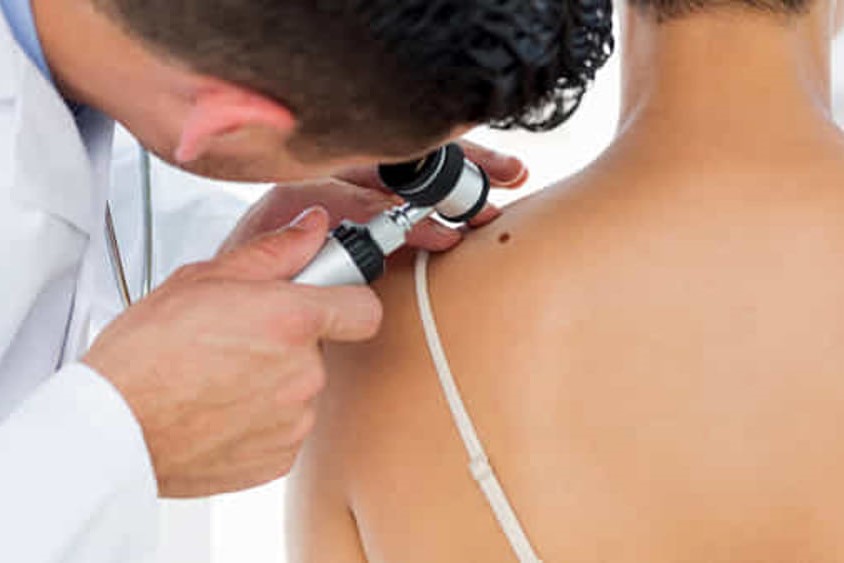
Mole mapping, when to do it?
Mole mapping is a dermatological test that should be carried out at least once, if not periodically, to monitor the skin and prevent the formation of serious diseases such as melanoma
Generally, it is performed by means of photographs or digital images of the entire body surface that are kept by the dermatologist for future comparison.
How is mole mapping done?
To perform mole mapping, the dermatologist uses a special optical instrument, called a dermatoscope, which is used to analyse the morphological and internal structure of the skin formations.
Through an illuminated lens, connected to a camera, the doctor will scan the entire skin, indicating and ‘mapping’ any dangerous moles or those that deserve to be checked over time.
These images will then be stored digitally to build a map of the patient’s body that will be useful for the doctor to monitor changes in the moles and assess the risk of them turning into tumours.
When to have a mole check?
Skin screening should be offered to the entire population at least once a year starting at the age of 30.
In this period, and up to the age of 60, there is in fact an increased risk of melanoma, but there is nothing to stop one from starting prevention from the age of 12/13 onwards.
In general, it is preferable to have a dermatological check-up when the skin is not tanned, preferably away from the summer season.
However, for some people, mole mapping may be recommended at a different frequency (at 3 to 6 months) if they present
- atypical, irregularly shaped and unevenly coloured moles;
- more than 50 moles
- a family or personal history of melanoma;
- previous sunburn.
Mole mapping: how to prepare for the examination?
Before undergoing a dermatological examination for mole mapping it is important to
- perform a regular skin self-examination and note down any changes or new signs;
- always keep the ABCDE rule in mind
- discontinue the use of self-tanners before the test because they can alter the colour and pattern of the moles;
- remove nail varnish so that the fingernails and toenails can be examined;
- wear your hair down to have your scalp checked as well;
- avoid wearing make-up during the examination.
Mole mapping: how often should the skin be checked?
Many dermatologists recommend checking the skin regularly or at least once a month.
Regular skin self-examinations are in fact particularly important for detecting early signs of melanoma, a 95% curable cancer if caught in its early stages.
Read Also
Emergency Live Even More…Live: Download The New Free App Of Your Newspaper For IOS And Android
Mole Mapping: More Accuracy With Videodermatoscopy
What Is A Tumour And How It Forms
Rare Diseases: New Hope For Erdheim-Chester Disease
How To Recognise And Treat Melanoma
Epidermolysis Bullosa And Skin Cancers: Diagnosis And Treatment
Skin: What To Do In Case Of Folliculitis?
Childhood Psoriasis: What It Is, What The Symptoms Are And How To Treat It
Dermatological Examination For Checking Moles: When To Do It
What Is A Tumour And How It Forms
Rare Diseases: New Hope For Erdheim-Chester Disease
How To Recognise And Treat Melanoma
Moles: Knowing Them To Recognise Melanoma
Skin Melanoma: Types, Symptoms, Diagnosis And The Latest Treatments
Melanoma: Prevention And Dermatological Examinations Are Essential Against Skin Cancer
Symptoms And Causes Of Spitz Nevus
What Is A Dysplastic Nevus And What Does It Look Like?
Nevi: What They Are And How To Recognise Melanocytic Moles


